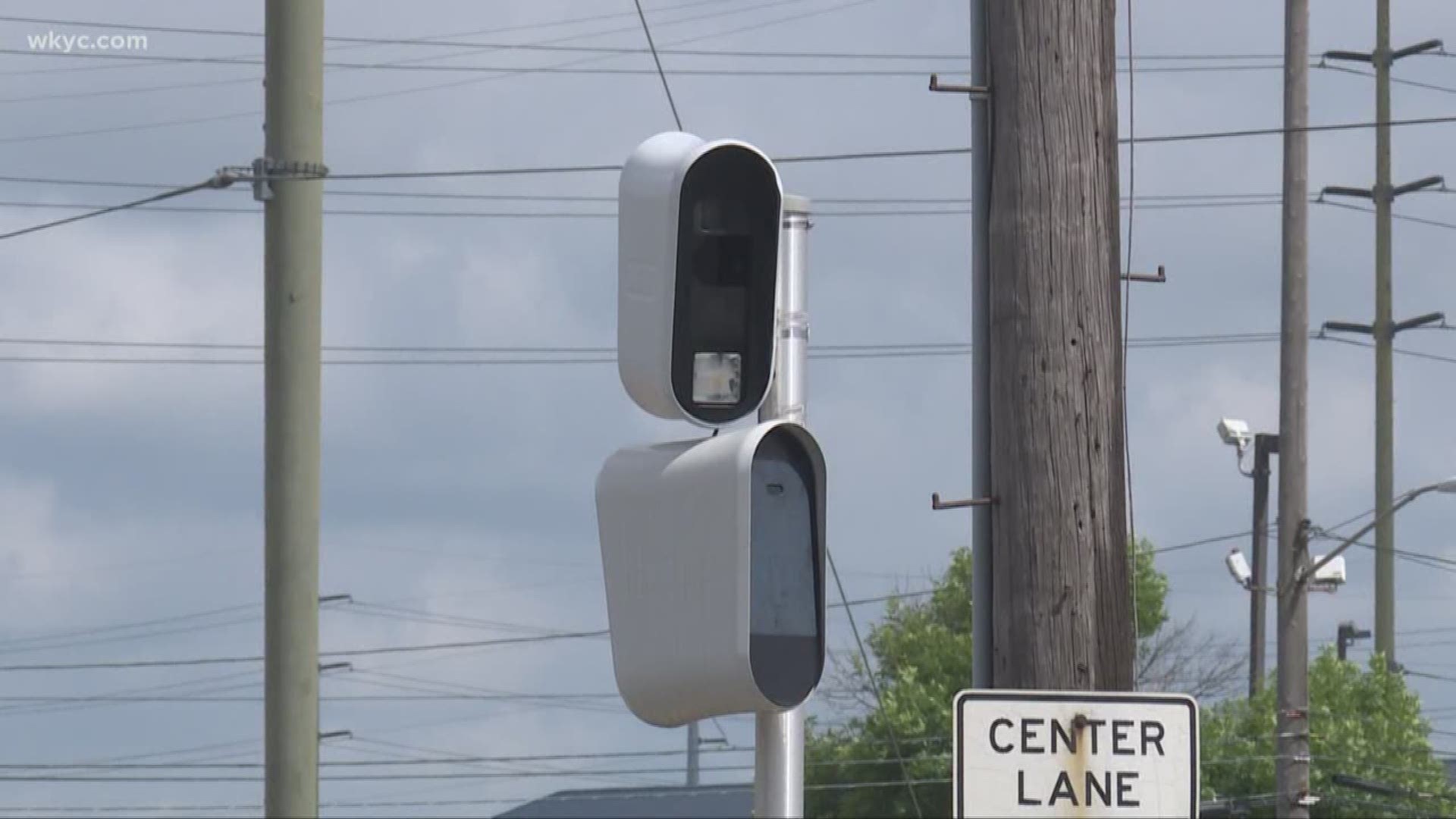COLUMBUS, Ohio — Editor's Note: The above video features previous reporting on traffic cameras in Northeast Ohio.
The battle over traffic cameras used by Ohio communities is heating up once again. And Northeast Ohio is right in the center of the debate.
On Wednesday, the Ohio Supreme Court heard arguments in the case of Newburgh Heights et al. v. State of Ohio. At issue is what happens to the money once you pay your automated ticket for speeding. House Bill 62, the state’s transportation budget that went into effect in 2019, provided that state money given to local governments would be reduced dollar-for-dollar by the amount of fines collected by traffic cameras. The city issuing speed tickets would also have to pay court costs on every ticket whether the case goes to court or not.
Newburgh Heights sued the state after HB 62 was passed and was joined by East Cleveland in the lawsuit. As 3News' Brandon Simmons reported in 2019, Newburgh Heights generates roughly $2 million dollars annually from its photo enforcement program. That money supports police and fire crews in the city and the costs for them to operate.
The Ohio Supreme Court said it will consider the matter and make a ruling in the future.
In the meantime, a Northeast Ohio lawmaker is putting a series of bills forth in the Ohio House with the aim of restricting and regulating the use of traffic enforcement cameras across the state. Here are the seven separate bills introduced last month by Rep. Tom Patton (R-Strongsville) :
House Bill 547: Prohibit a municipal corporation or township that does not operate either a fire department or an emergency medical services organization from utilizing traffic law photo-monitoring devices.
House Bill 548: Prohibit a local authority with a population of 200 or fewer from utilizing traffic law photo-monitoring devices.
House Bill 549: Prohibit a local authority, in any year, from issuing a total number of traffic tickets based on the use of traffic law photo-monitoring devices that exceeds two times the population of the local authority.
House Bill 550: Prohibit a local authority from deriving more than 30% of the total annual revenue of the local authority from the issuance of tickets for traffic law violations based on evidence recorded by traffic law photo-monitoring devices.
House Bill 551: Require 80% of all revenue from a traffic camera ticket be used for law enforcement expenses.
House Bill 552: Prohibit placement of a traffic camera within one-half mile of an interstate highway entrance.
House Bill 553: Prohibit a local authority, located in a county with a population of one million or more, from using traffic cameras to enforce traffic violations on interstate highways.
“These bills provide reasonable solutions to our ever-growing problem of the misuse of local authority,” said Patton. “Traffic cameras have proven to be a nuisance to the public providing zero increase to public safety, and while I understand their purpose in principal, I have yet to see it in practice.”
Four of the seven bills introduced are similar to legislation introduced by Patton in the previous legislative term. Patton pointed to a specific Northeast Ohio community as the example of why traffic cameras need to be regulated.
“In 2017, nearly 95% of the total revenue from Linndale Village just outside of Cleveland came from the issuance of fines, licenses and permits generated via traffic camera tickets. This is clearly an unjust use and abuse of municipal local authority, and I look forward to working on this legislation with my colleagues to end this cycle,” Patton stated.
Previous Reporting:

